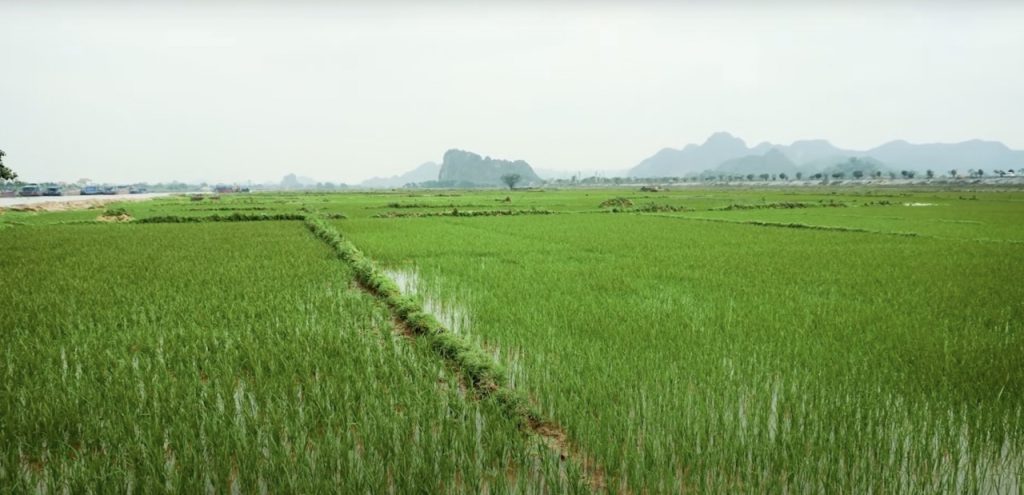Is there a secret to longevity? This health expert says 1,000% yes
In the era of social media, post-COVID, and with mental health at the forefront, a shift is taking […]

The concept was first introduced by the International Rice Research Institute (IRRI) in collaboration with other organizations to align rice production with the principles of sustainable development. The team is utilising an advanced breeding method known as marker-assisted breeding, allowing them to detect genes with desirable traits from rice grains and merge them with other rice varieties to produce a more advantageous crop.
One of the key features of this experimental rice is its resilience. Unlike regular rice, it can survive being submerged underwater for an additional two weeks. On the other hand, the drought-resistant variety is now being grown by farmers in India, Nepal, and the Philippines. These crops have been genetically enabled to survive weeks longer than regular crops with minimal water.
Other key features of this innovative rice would be:
The benefits are various and numerous; it is hoped that these climate-smart rice varieties will stabilise and reduce risk in rice cultivation, lower production costs, and improve farmers’ income and quality of life.
The Philippines, being a predominantly agricultural country, has rice at the heart of its farming system and its culture. Given the rising temperatures, increasing frequency of extreme weather events, and sea level rise due to climate change, the country’s rice production faces considerable risks. Thus, the innovative breakthrough of climate-smart rice varieties can be a game-changer for the country’s agricultural future.
One such variety developed by IRRI is the Sub1 rice, bred to withstand flood conditions. Considering that the Philippines experiences an average of 20 typhoons a year, this trait is particularly useful. Sub1 rice, which can endure being submerged for extended periods, helps farmers to drastically mitigate crop loss from flooding, ensuring food security even in the face of extreme weather events.
On the other hand, the drought-resistant rice variety, such as the Sahbhagi Dhan developed in India, is gaining traction in the Philippines. It is a promising solution to combat dry spells, especially in regions where irrigation is scarce. The adoption of these varieties empowers Filipino farmers to maintain productivity, even amid fluctuating climatic conditions.
Further innovation in climate-smart rice farming lies in improved varieties, bolstered by sophisticated water and nutrient management strategies. For instance, the Alternate Wetting and Drying (AWD) technique reduces water use by up to 30% without compromising yield. Similarly, site-specific nutrient management approaches, based on real-time soil health monitoring, ensure the optimum application of fertilizers, promoting both crop health and environmental sustainability.
Along with these, the Integrated Pest Management (IPM) strategy is central to the climate-smart approach. By combining traditional knowledge with modern technology, farmers can better predict and manage pests and diseases, reducing the reliance on chemical pesticides and thus enhancing the ecosystem’s overall health.
Additionally, the concept of Conservation Agriculture – the practice of maintaining a permanent soil cover, diversifying crop rotations, and reducing tillage – further contributes to the resilience and sustainability of rice farming. This approach not only minimizes soil erosion and maintains soil health but also contributes to carbon sequestration, playing a part in mitigating climate change.
The potential of these climate-smart rice varieties and techniques extends far beyond mere survival. By stabilizing and reducing risk in rice cultivation, they help lower production costs and, consequently, improve farmers’ income and quality of life. They also play a significant role in achieving food security and promoting sustainable agriculture in the face of climate change.
While challenges still exist in the widespread adoption and implementation of these techniques, the future of climate-smart rice farming in the Philippines looks promising. Through continued research, education, and supportive policies, the resilience of the Philippine rice sector can be significantly bolstered, providing a beacon of hope in an increasingly unpredictable global climate.
Thank you for watching; subscribe for more exciting content here on Qonversations. See you soon.

In the era of social media, post-COVID, and with mental health at the forefront, a shift is taking […]

With its fast speeds and revolutionary potential, 5G stands out as a noteworthy milestone in the field of […]